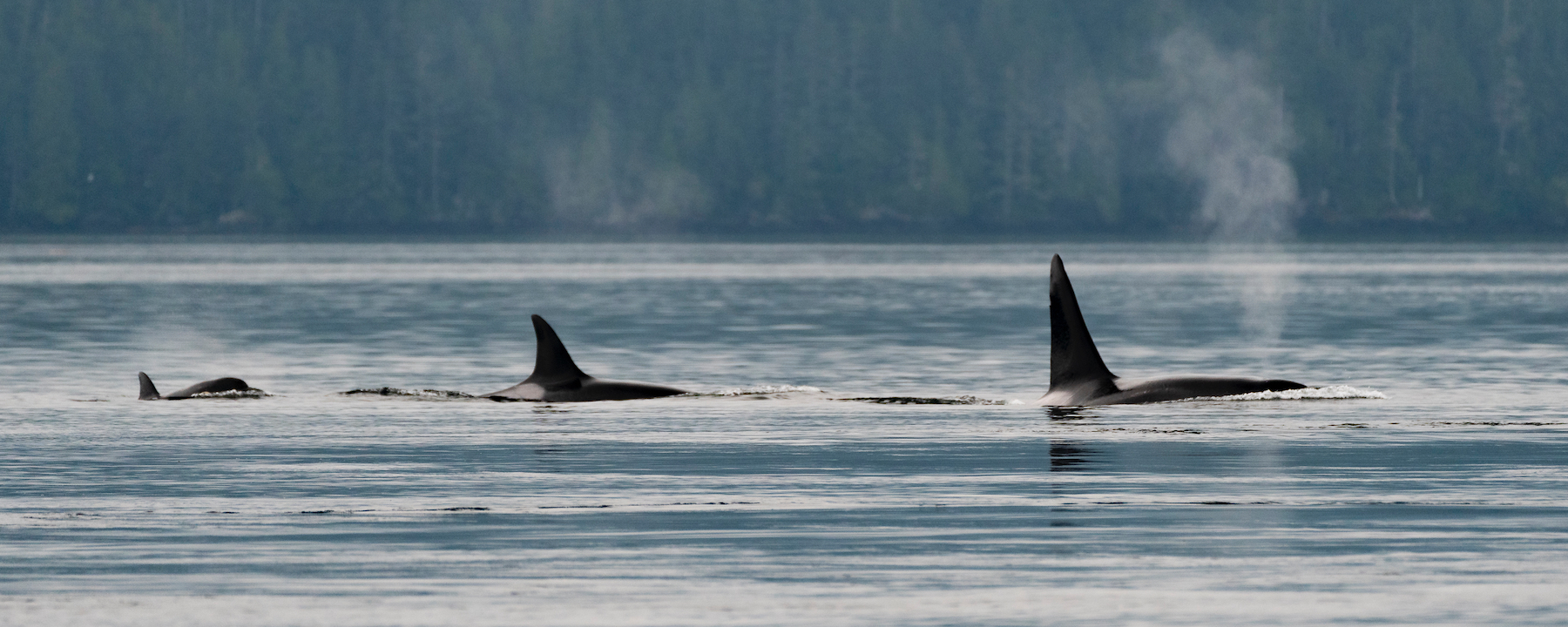Sound is as important to marine mammals (and many fishes!) as vision is to humans. Ocean noise can reduce the amount of food that whale and dolphin populations can access, interfere with communication essential to carrying out vital life functions, and in extreme cases, displace animals from the habitat on which they depend. We found that in one area, endangered whales are losing up to 97% of their opportunities to communicate based on noise from human activities in the Salish Sea.
Our Work
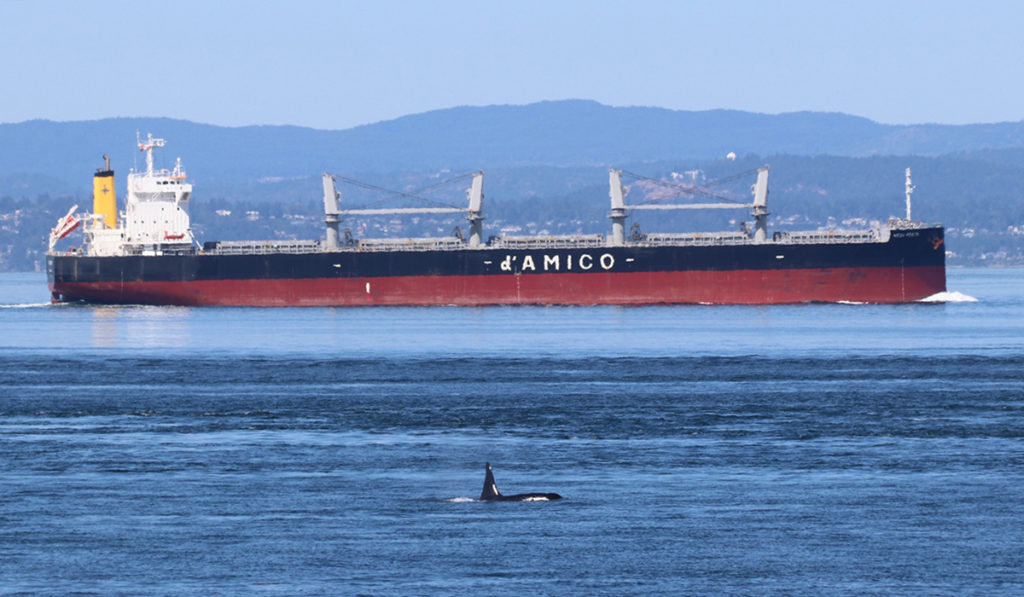
Reducing Vessel Noise Increases Foraging in Endangered Killer Whales
In our recent study published in Marine Pollution Bulletin, we measured the effectiveness of the Port of Vancouver’s voluntary vessel slowdown in SRKW critical habitat. Exploratory analyses found strong support between received noise level from ships and the probability of SRKWs engaging in foraging activity. Reducing ship speed, and therefore ship noise amplitude will help decrease the probability of ship noise disrupting SRKW foraging activity and may help to increase the proportion of accessible salmon. Put simply, if we make less noise, it helps the whales hunt for salmon.
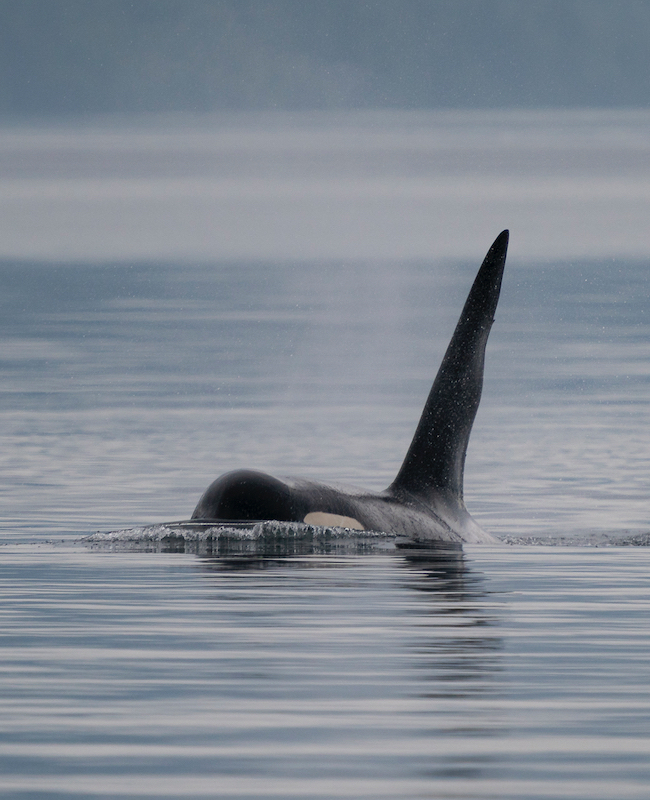
Measuring Noise in Marine Waters — A New Puget Sound Vital Sign
Vessel noise and other chronic noise sources are known to reduce habitat quality for a multitude of marine species in Puget Sound that depend on acoustic cues to forage, find mates, and avoid predators.
Oceans Initiative was recently selected by Puget Sound Partnership to help build a foundation to measure ocean noise in Puget Sound. We have taken a creative approach to developing a monitoring network capable of collecting acoustic data from a broad range of locations throughout the Sound with a combination of bottom-mounted hydrophones, and community scientists operating handheld recording systems (Acoustic Prospecting Toolkit). Our aims are to ensure that the new ocean noise Vital Sign is grounded in evidence, and to help Ports make smart decisions about how they can incentivize efforts to reduce noise from individual ships.

Assessing the Impact of Noise from Deep Sea Mining
In the absence of sunlight, many deep-sea species use sound and vibrations in their ecology and thus are likely to be relatively vulnerable to ocean noise from human activities such as deep-sea mining. With funding from the Pew Charitable Trusts, our team worked with colleagues from Hawaii, Australia, and Japan to look at the potential contribution of deep sea mining operations to ocean noise in the Clarion-Clipperton zone in the North Pacific. We explored how much noise may be generated by this new industry, and consequently, how big the acoustic footprint of deep sea mining could be.
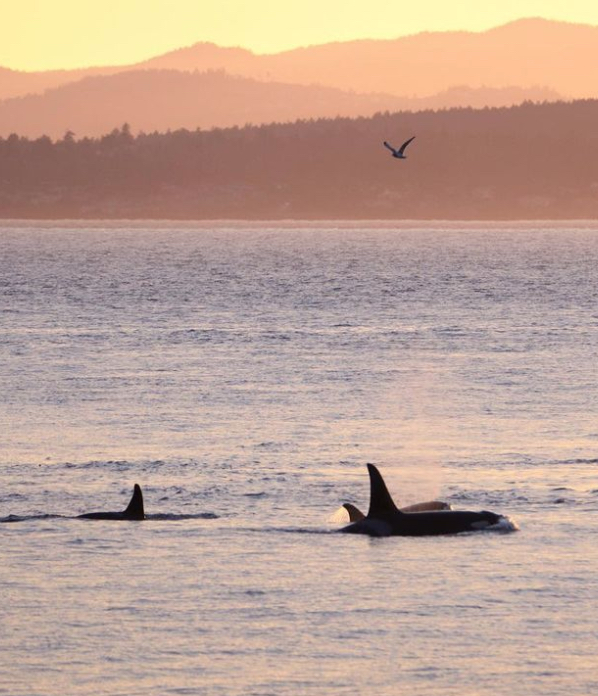
Protecting the Acoustic Quality of Critical Marine Habitats in the Pacific Northwest
Since 2008, we have been measuring ocean noise levels in important whale habitats from Alaska to Puget Sound. We then translate that complex science to simple metrics of acoustic habitat quality to whales with different hearing abilities. This work builds the evidence base needed to inform mitigation. Some of the solutions are easy: avoiding certain sites to maintain quiet(er) marine protected areas; slowing ships down; keeping small boats out of key foraging areas for endangered orcas.
In 2019, Oceans Initiative conducted a study that assessed underwater noise from Growler jets in Puget Sound. Our hydrophone, anchored in nearly 100 feet of water offshore of the runway from Naval Air Station Whidbey Island, distinctly picked up the sound of the jets, with noise levels high enough to warrant concern for fish, seabirds, and marine mammals, including SRKWs. In 2021, we expanded our underwater noise monitoring, using an extremely sensitive hydrophone called an AMAR (Autonomous Multichannel Acoustic Recorder) to learn if military jet noise is penetrating into the waters of the San Juan Islands important to SRKWs for feeding. We now have a powerful and sophisticated tool for continued acoustic research in the Salish Sea. The AMAR is a huge addition to our toolkit to keep SRKW habitats clean, quiet, and full of fish.
From the Blog
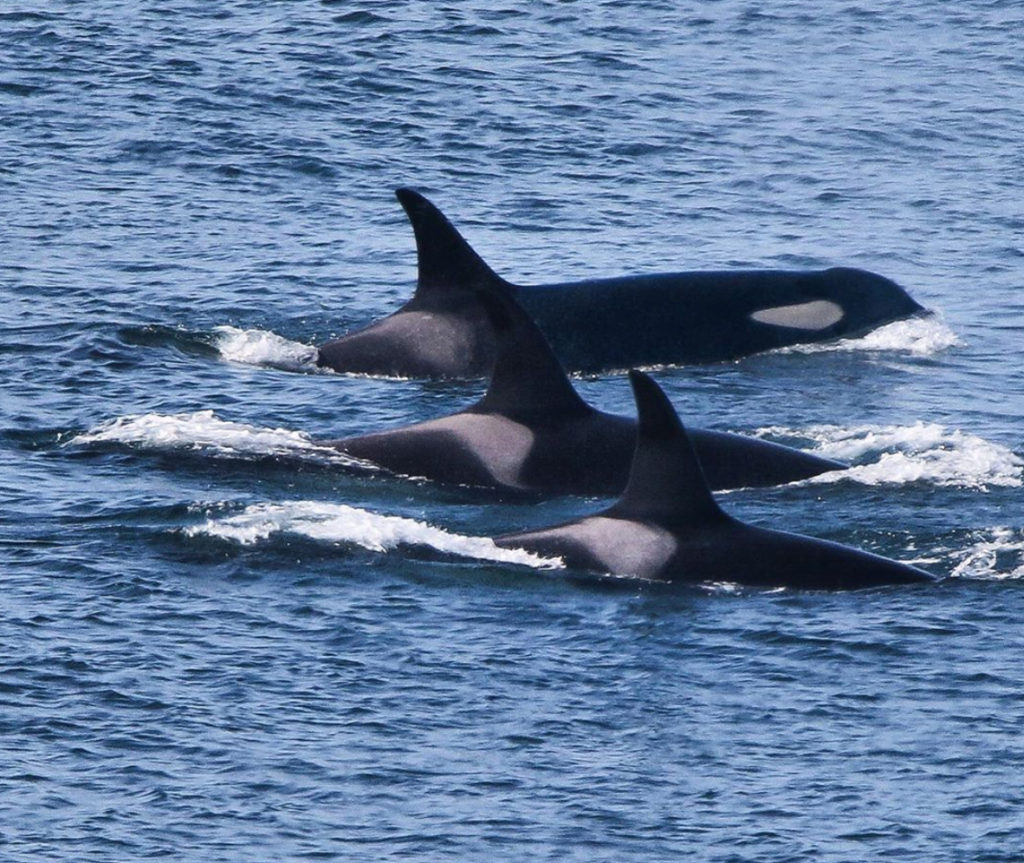
Underwater Noise from Airplanes: An Overlooked Source of Ocean Noise
We tend to think of the air-water interface as a barrier to noise. Planes fly over the ocean all the time, but conventional wisdom tells us that most of the sound bounces off the surface of the ocean, and has little impact on the whales and dolphins that swim beneath the surface.
Selected Publications
Rob Williams, Danielle Cholewiak, Christopher Clark, Christine Erbe, John George, Robert Lacy, Russell Leaper, Sue Moore, Leslie New, E.C.M. Parsons, Howard Rosenbaum, Teri Rowles, Mark Simmonds, Raphaela Stimmelmayr, Robert Suydam, Andrew Wright, 2020. Chronic ocean noise and cetacean population models. Journal of Cetacean Research and Management.
Lauren M. Kuehne, Christine Erbe, Erin Ashe, Laura T. Bogaard, Marena Salerno Collins, and Rob Williams, 2020. Above and below: Military Aircraft Noise in Air and under Water at Whidbey Island, Washington. Journal of Marine Science and Engineering.
Erbe, C., Williams, R,. Parsons, M., Parsons, S.K., Hendrawan, I.G., Dewantama, I.M.I., 2018. Underwater noise from airplanes: an overlooked source of ocean noise. Marine Pollution Bulletin, 137:656-661.
Williams, R., Erbe, C., Dewantama, I.M.I., Hendrawan, I.G. 2018. Effect on ocean noise: Nyepi, a Balinese day of silence. Oceanography, 31(2), https://doi.org/10.5670/oceanog.2018.207.
Veirs, S., Veirs, V., Williams, R., Jasny, M., Wood, J. 2018. A key to quieter seas: half of ship noise comes from 15% of the fleet. PeerJ Preprints 6:e26525v1

